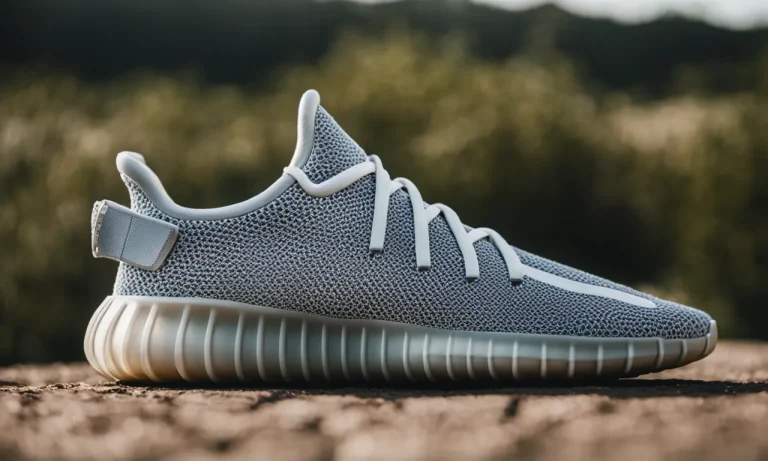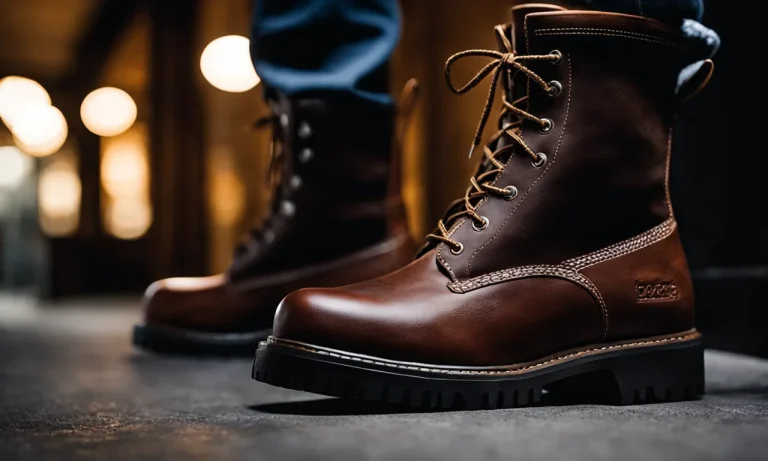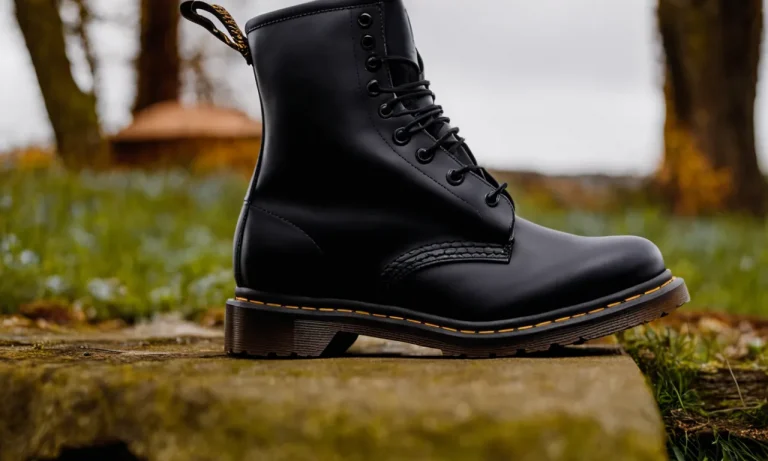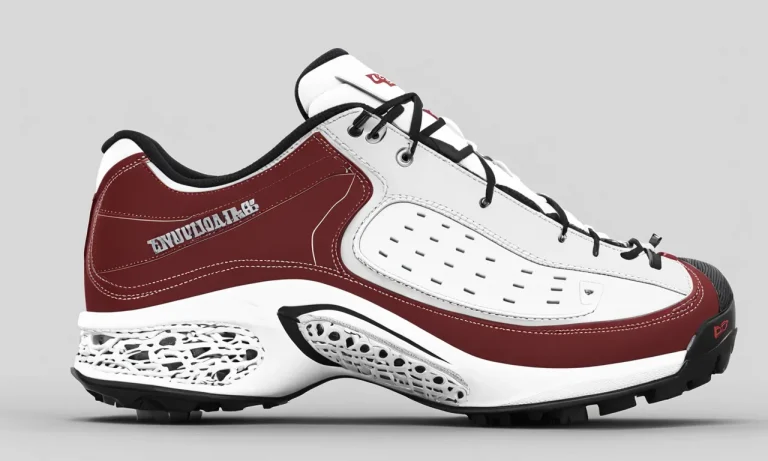Whether you’re a casual walker or marathon runner, having the right athletic shoes is crucial for comfort, performance, and injury prevention. But with so many options on the market, it can be tricky to decide between training shoes and running shoes.
Keep reading as we dig into the key differences between these two types of footwear to help you make the choice that best fits your fitness regimen and preferences.
If you’re short on time, here’s the quick answer: Training shoes provide more stability and cushioning for lateral movements, while running shoes offer lightweight flexibility and responsiveness to propel you forward.
Consider your primary exercise activities, gait, foot type, and any orthotic needs when deciding between the extra support of training shoes or the enhanced performance of running shoes.
Weight and Cushioning
Training Shoes
When it comes to weight and cushioning, training shoes are designed to provide a balance between support and flexibility. They are typically a bit heavier than running shoes, as they need to provide stability and protection during various training activities.
The cushioning in training shoes is often firmer and more responsive, allowing for quick movements and changes in direction. This makes them ideal for activities such as weightlifting, cross-training, and HIIT workouts, where stability and support are crucial.
Running Shoes
On the other hand, running shoes prioritize cushioning and lightweight construction to enhance comfort and performance during running. They are typically lighter in weight compared to training shoes, allowing for a more efficient stride and reduced fatigue over long distances.
The cushioning in running shoes is designed to absorb impact and provide a comfortable landing with each step. This helps to reduce the stress on joints and muscles, making them a great choice for runners of all levels.
Looking for more in-depth information about the weight and cushioning of different shoe models? Check out Runner’s World for comprehensive reviews and recommendations.
| Training Shoes | Running Shoes |
|---|---|
|
|
Ultimately, the choice between training shoes and running shoes depends on the specific activities you engage in. If you primarily focus on running, investing in a good pair of running shoes can significantly improve your performance and reduce the risk of injuries.
On the other hand, if you engage in a variety of training activities that involve different movements and exercises, training shoes may be a more versatile option. It’s important to try on different models and consider your specific needs before making a decision.
Stability and Motion Control
Training Shoes
Training shoes are designed to provide stability and motion control during various types of workouts and exercises. They are specifically engineered to support lateral movements, such as side-to-side and multidirectional movements, which are common in activities like weightlifting, CrossFit, and HIIT workouts.
Training shoes typically feature a wider base and a lower heel drop, which helps to distribute weight evenly and provide a stable platform for lifting weights or performing dynamic movements. They are also equipped with additional support features, such as reinforced sidewalls and midfoot straps, to prevent excessive foot movement and ensure proper alignment.
For individuals who participate in activities that involve a lot of lateral movements and require stability, training shoes are the ideal choice. They offer the necessary support and motion control to keep the feet and ankles stable, reducing the risk of injuries.
Running Shoes
Running shoes, on the other hand, are primarily designed to provide cushioning, shock absorption, and support for forward motion. They are specifically engineered to absorb the impact forces generated during running, reducing the stress on the joints and muscles.
Running shoes typically feature a more cushioned midsole and a higher heel drop, which helps to attenuate the impact forces and provide a smoother running experience. They also have a more flexible outsole to facilitate the natural movement of the foot while running.
While running shoes do offer some level of stability, their main focus is on cushioning and comfort rather than lateral support. They are designed to accommodate the repetitive forward motion of running and may not provide the same level of stability and motion control as training shoes.
It’s important to note that the choice between training shoes and running shoes ultimately depends on the type of activity you engage in. If your workouts involve a combination of weightlifting, agility drills, and cardio exercises, investing in a pair of versatile training shoes would be a great option.
On the other hand, if you primarily focus on running and want shoes that prioritize cushioning and support for forward motion, then running shoes would be the better choice.
For more information on choosing the right shoes for your specific needs, you can visit reputable websites such as Runner’s World or Men’s Health.
Durability and Wear
Training Shoes
When it comes to durability and wear, training shoes are designed to withstand the rigors of various types of workouts. They are built with sturdy materials such as reinforced rubber soles and durable uppers to provide stability and support during lateral movements, weightlifting, and other intense exercises.
Training shoes are also equipped with features like extra cushioning and added toe protection to ensure longevity.
Many training shoes also incorporate technologies like abrasion-resistant outsoles and reinforced stitching to enhance durability. These features make training shoes a great choice for individuals who engage in high-intensity training sessions that involve a combination of different exercises.
Whether you’re doing HIIT workouts, cross-training, or weightlifting, training shoes are designed to withstand the demands of these activities and offer long-lasting performance.
Running Shoes
While training shoes are built to withstand a variety of exercises, running shoes are specifically designed to cater to the unique needs of runners. When it comes to durability and wear, running shoes are crafted to endure the repetitive impact and stress that running places on the feet and legs.
Running shoes feature cushioning technologies in the midsole, such as EVA foam or air-filled pockets, that absorb shock and provide a comfortable and responsive ride. The outsoles of running shoes are designed to provide traction and durability, with patterns and materials optimized for different surfaces like roads or trails.
However, it’s important to note that running shoes are primarily designed for running, and the wear they experience is typically focused on the midsole and outsole due to the repetitive motion of running.
The upper of running shoes tends to be lighter and more breathable, which can result in slightly less overall durability compared to training shoes.
Ultimately, the durability and wear of both training shoes and running shoes depend on factors such as the quality of materials used, the frequency and intensity of use, and proper maintenance. It’s important to choose the appropriate shoe for your specific activity to ensure optimal performance and longevity.
Traction and Grip
Training Shoes
When it comes to traction and grip, training shoes are specifically designed to provide stability and support during a wide range of movements. Whether you’re lifting weights, doing plyometrics, or engaging in high-intensity interval training (HIIT), having good traction is crucial to prevent slipping and maintain control.
Training shoes are equipped with rubber outsoles that have multidirectional patterns or lugs, helping to grip the ground firmly and provide excellent traction.
Additionally, training shoes often feature a wider base and a lower heel drop compared to running shoes. This design helps to distribute the weight evenly and enhance stability during lateral movements.
The increased stability and traction offered by training shoes make them ideal for activities that involve quick changes in direction, such as CrossFit workouts or agility training.
Running Shoes
While running shoes also offer traction and grip, their primary focus is on providing cushioning and support for the repetitive impact experienced during running. The outsoles of running shoes typically have a pattern specifically designed for forward motion, with deeper grooves to channel water away and reduce the risk of slipping on wet surfaces.
The traction of running shoes is optimized for running on various terrains, including roads, trails, and tracks. Different types of running shoes may have variations in their outsole patterns to cater to specific running conditions.
For example, trail running shoes often have aggressive lugs to provide better grip on uneven and slippery surfaces, while road running shoes have smoother outsoles for enhanced performance on pavement.
It’s important to note that while running shoes can provide decent traction for some cross-training activities, they may not offer the same level of stability and grip as training shoes. If you’re primarily engaged in activities other than running, it’s recommended to invest in a pair of training shoes to ensure optimal performance and safety.
Flexibility
Training Shoes
When it comes to flexibility, training shoes are designed to provide a good balance between support and flexibility. They are built to accommodate a variety of movements, making them suitable for a wide range of activities such as weightlifting, aerobics, and circuit training.
Training shoes typically have a thicker sole and a stiffer midsole, which helps to provide stability during lateral movements. The outsole of training shoes also tends to have more grip, allowing for better traction on different surfaces.
Running Shoes
On the other hand, running shoes prioritize flexibility to ensure a smooth and efficient stride. They are specifically designed to support the natural movement of the foot during the running gait cycle.
Running shoes have a more cushioned and flexible midsole, which helps to absorb impact and provide a responsive feel. The outsole of running shoes is typically made of durable rubber with grooves or flex grooves that allow for greater flexibility and a better grip on the road or trail.
It’s important to note that the level of flexibility needed in a shoe depends on the activity. While training shoes offer more stability and support for multidirectional movements, running shoes prioritize flexibility to enhance the running experience.
It’s recommended to choose the appropriate type of shoe based on your specific needs and the activities you will be engaging in.
Consider Your Fitness Goals and Activities
When choosing between training shoes and running shoes, it’s important to consider your fitness goals and the specific activities you engage in. Both types of shoes are designed to support your feet and provide comfort, but they have different features that cater to different needs.
Best Uses for Training Shoes
Training shoes are versatile and suitable for a variety of activities, such as weightlifting, HIIT workouts, and cross-training. They are designed to provide stability, support, and flexibility, making them ideal for activities that involve lateral movements, quick changes in direction, and lifting weights.
The flat and wide soles of training shoes provide a solid base and help to distribute the weight evenly, reducing the risk of injury.
For weightlifting: Training shoes are a great choice as they provide a stable platform and have a firm grip on the ground. This allows you to maintain proper form and lift heavier weights without compromising your balance.For HIIT workouts: High-intensity interval training (HIIT) involves a combination of intense exercises and short rest periods. Training shoes offer the necessary cushioning and support for quick, explosive movements, reducing the impact on your joints and providing greater comfort during intense workouts.For cross-training: If you engage in a variety of activities like cardio, strength training, and agility exercises, training shoes are your go-to option. They provide the versatility and support needed for multi-directional movements, helping you perform at your best in different types of workouts.
Best Uses for Running Shoes
Running shoes, on the other hand, are specifically designed for running and provide the necessary cushioning, shock absorption, and stability to support the repetitive impact of the sport. They are engineered to enhance your running performance and reduce the risk of injuries.
For long-distance running: If you’re a marathon runner or enjoy going for long-distance runs, running shoes are essential. They offer superior cushioning and shock absorption, protecting your feet and joints from the impact of each stride. This helps to reduce fatigue and increase your endurance.For road running: Running shoes are designed with outsoles that provide good traction on paved surfaces, making them suitable for road running. They also have features like breathable uppers and moisture-wicking materials to keep your feet cool and dry during extended runs.For trail running: If you prefer off-road running on uneven terrains, trail running shoes are your best bet. They have rugged outsoles with deep lugs for better grip on uneven surfaces and offer additional protection for your feet from rocks, roots, and other trail hazards.For sprinting: If you’re into sprinting or short-distance running, lightweight running shoes with minimal cushioning and a more responsive feel can enhance your speed and agility. These shoes are designed to promote a natural and efficient running stride.
Remember, it’s important to choose the right type of shoe based on your specific fitness goals and activities. Consulting with a professional or getting a gait analysis done can help you determine the best shoe for your needs.
Sources:
Conclusion
When choosing between training shoes and running shoes, consider your main activities, foot type, mileage, and support needs. Training shoes offer maximum stability for lateral movements with heavy cushioning, while running shoes provide lightweight flexibility for straight-ahead speed.
Visit a specialty running store to get properly fitted for shoes that match your gait, feet, and fitness regimen. With the right pair of athletic shoes, you’ll be off to a comfortable, supported, and injury-free start!






